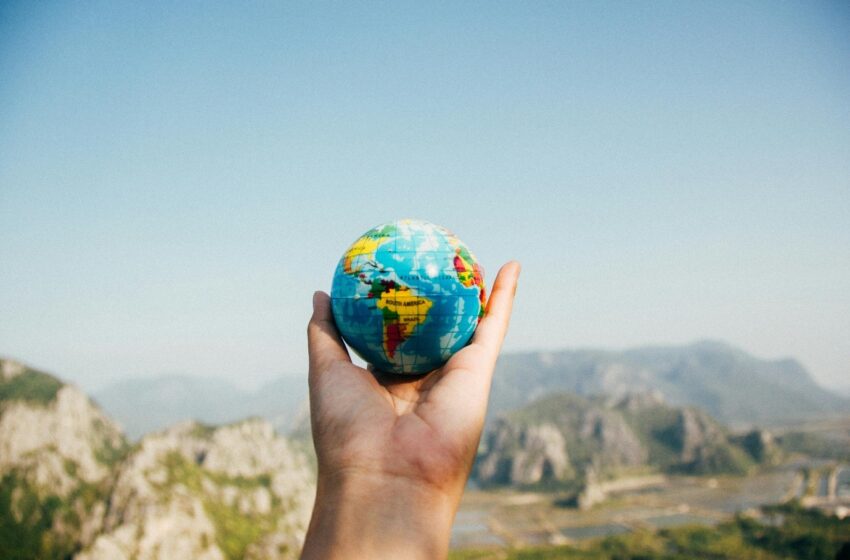
A Borderless World and a Deeper Way to Wander in 2025
The way we travel has changed. Dramatically, and perhaps permanently.
In 2025, travel is less about how many places you can check off and more about how deeply you can experience just one. Gone are the days of rushed itineraries and overcrowded sightseeing. Today, we are witnessing the rise of a new kind of traveler—one who values connection over convenience and meaning over miles.
At the heart of this shift are three powerful trends shaping the way we explore the world: visa-free mobility, slow travel, and immersive, community-driven experiences.
As the world becomes more connected digitally and more open physically, a new kind of travel ethic is emerging. One where slowness is not seen as a limitation but as a luxury. Where a deeper understanding of people and place is the prize.

In 2025, the true luxury is time. And the true destination? Connection.
Whether you’re drifting between visa-free islands, picking grapes in a Georgian vineyard, or learning songs in an Indigenous forest camp, one thing is certain. You’re no longer just a visitor.
You’re part of the story.
A New Era of Seamless Borders 2025
In many parts of the world, travel has become easier than ever before. Countries are actively simplifying entry requirements and removing bureaucratic friction to attract long-term travelers and digital nomads. According to the 2025 Henley Passport Index, more than 60 countries have updated or signed mutual visa-waiver agreements, giving millions of people the ability to explore without paperwork anxiety.
The Association of Southeast Asian Nations (ASEAN) has emerged as a global leader in this space. Most member countries now offer up to 90 days of visa-free travel to fellow ASEAN citizens and tourists from select global partners. This has transformed the region into a free-flowing ecosystem for backpackers, freelancers, and remote professionals.
In South America, countries within the Mercosur alliance—including Argentina, Brazil, Paraguay, and Uruguay—are following suit. Travelers can move freely within the bloc, often with just a national ID card.
Then there’s the Caribbean. In an ambitious step towards tourism unity, the CARICOM Travel Stamp allows easy access to over a dozen island nations, effectively turning the region into a sun-soaked, borderless paradise.
One of the most remarkable examples comes from Estonia. What began in 2020 as a niche e-residency program has now matured into a full digital infrastructure. It attracts thousands of remote workers who legally live and contribute to the economy without being permanent residents.
“Travel barriers are falling fast,” says Sophie Lin, a travel trends analyst at Euromonitor International. “We’re seeing a rise in multi-country journeys, especially among Gen Z and millennials who see borders as outdated obstacles.”
Traveling Slowly and Living Fully
Beyond border policies, travelers are rethinking the very pace of their journeys. The movement toward “slow travel” is not new, but in 2025, it has gone mainstream.
The concept is simple but profound: spend more time in fewer places. Stay for weeks or even months. Walk. Cook. Learn. Build relationships. Do less, but experience more.
In Portugal’s Alentejo region, a wave of farm stays and eco-villages are attracting wellness-focused travelers who want to reconnect with land and community. Here, tourists harvest olives, take part in regenerative agriculture programs, and enjoy long, communal meals under fig trees.
Far from the crowds of Tbilisi, Georgia’s mountain villages are seeing a quiet revival. With visa-free access for citizens of over 90 countries, and a reputation for hospitality, Georgia has become a haven for creative travelers seeking culture and calm.
On Japan’s Shikoku Island, visitors spend weeks walking the ancient 88-temple pilgrimage trail, immersing themselves in spiritual silence and rural life. The experience is meditative and slow by design, a stark contrast to Tokyo’s neon buzz.
What’s driving this trend? A global exhaustion with speed. Many are weary of travel that feels transactional. They want meaning. And platforms like Workaway, WWOOF, and TrustedHousesitters are booming with users looking to trade skills for shelter and connection.
Marta Ribeiro, a small-scale farmer in Alentejo, describes the change with a smile. “We hosted a Canadian couple for three months. They helped us harvest, and we taught them how to make olive oil. It felt less like tourism and more like family.”
Immersion Over Itineraries
If slow travel is about time, immersive travel is about depth.
In 2025, travelers are turning to experiences that offer a deeper window into local life and culture. These aren’t your typical guided tours. They are stories, lived in real time.
In Canada, Indigenous tourism has gained new momentum. Forest walks, heritage storytelling, and eco-lodges run by First Nations communities are creating respectful, regenerative opportunities for cultural exchange. The goal is not just to learn about Indigenous life but to support its continuity.
In northern Vietnam, visitors are welcomed into the homes of Hmong and Dao families along the Ha Giang Loop. They learn to cook traditional meals, participate in rituals, and hear personal histories that don’t appear in guidebooks.
In Oaxaca, Mexico, the Zapotec weaving villages have become the center of a textile tourism movement. Travelers visit women-led cooperatives, learn ancient techniques, and contribute directly to local economies.
Even Airbnb has shifted gears. Its “Experiences” section now focuses more on authenticity, vetting hosts who offer meaningful, often offline engagements. According to the company’s internal 2025 data, bookings for immersive stays and activities are up 34 percent in just the first quarter.
“Travelers today want eye contact, not eye candy,” says Jessica Patel, founder of UK-based ethical travel firm Impact Journey Co. “It’s not about ticking sights off a list. It’s about listening. Understanding. Sharing.”
Planning Your Next Journey? Here Are Some Ideas to Get You Started
Thinking of where to go in 2025? Start by asking yourself not just “where,” but “how” you want to experience the world. Here are a few thoughtful suggestions to help you plan a vacation that goes beyond the guidebook:
- For borderless freedom: Consider combining Thailand, Laos, and Cambodia for a 3-month, cross-cultural Southeast Asian immersion. Visa-free entry in the region makes slow travel a breeze.
- For off-the-grid peace: Head to the Azores in Portugal or the Carpathian Mountains in Romania. Both regions are embracing sustainable travel and offer rich nature-based experiences.
- For community and culture: Book a week with an Indigenous tourism program in Canada or explore cooperative-based crafts in Peru’s Sacred Valley.
- For work and wander: Look into Estonia, Costa Rica, or Barbados—countries offering digital nomad visas and solid infrastructure for remote work with a side of adventure.
- For inner reset: Try a pilgrimage route like Japan’s Shikoku, Spain’s Camino del Norte, or even a local temple stay in South Korea.
Most importantly, be open. Let the destination guide you, but let your intent shape the journey.






